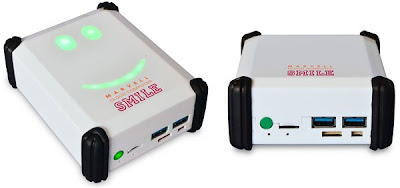
American computer maker DELL is actually taking the business tablet concept seriously and the first result is the Latitude 10 tablet. This one is powered by Intel’s Clover Trail SoC.
The new tablet is powered by Microsoft’s Windows 8 operating system that also brings support for all existing Windows 7 and other Windows-based x86 software. Uninformed business users might be surprised by the low performance of the device. Surely, the tablet will play movies and browse the web decently, but performance wise it won’t be able to hold a candle to a simple Core i5 Ivy Bridge system. The DELL Latitude 10 is a 10” tablet just like its name suggests and has a full 2 GB of RAM memory that is absolutely necessary for the Windows...



 9/19/2012 07:48:00 PM
9/19/2012 07:48:00 PM
 dannzfay
dannzfay





















